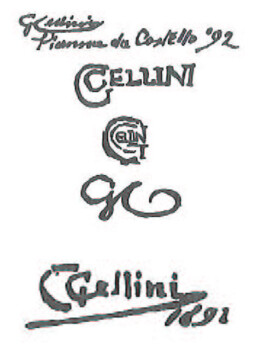
Cellini Giuseppe *
CELLINI GIUSEPPE
Roma 1855 – 1940
Dopo aver studiato fino al 1875 all’Accademia di San Luca, dal 1878 al 1880 seguì i corsi del Museo Artistico Industriale. Si avvicinò quindi a N. Costa e alla sua Scuola Etrusca interessandosi alle teorie preraffaellite. In contatto con gli ambienti colti e aristocratici della capitale, protetto dal principe B. Odescalchi, nel 1882 conobbe G. D’Annunzio, con il quale collaborò in diverse occasioni (illustrazioni per il volume Isaotta Guttadauro, 1886). Nel 1885 espose con la Società Amatori e Cultori alcuni acquerelli di paesaggio (Di sera, Dentro Roma, Monti Parioli) e l’anno seguente partecipò alla fondazione della società “In Arte Libertas”, alla quale diede anche il nome. Nel 1888 decorò la galleria di Palazzo Sciarra a Roma con scene allegoriche, racchiuse da preziosi motivi decorativi, dedicate alle virtù della donna. Dopo il soggiorno in Portogallo, dal 1889 al 1892, fu per qualche tempo a Modena e a Napoli tornando a stabilirsi a Roma nel 1894. Artista di ampia cultura, ricoprì un ruolo di primo piano nella diffusione dell’estetismo nella Roma di fine secolo, adottando tecniche diverse e applicandole a vari soggetti: religiosi (San Domenico, esposto a Roma nel 1885; L’Assunta, chiesa di Bassano Romano), temi allegorici di matrice costiana, idilli campestri dal sapore böckliniano (Ninfa, 1890, coll. privata) e ritratti. Nel 1904 fu anche tra i fondatori del gruppo dei “XXV della Campagna Romana” e fino al 1921 espose con frequenza alle mostre romane (1889, Fantasia, coll. privata; 1897, Mergellina, Oporto, Musae noster amor).
